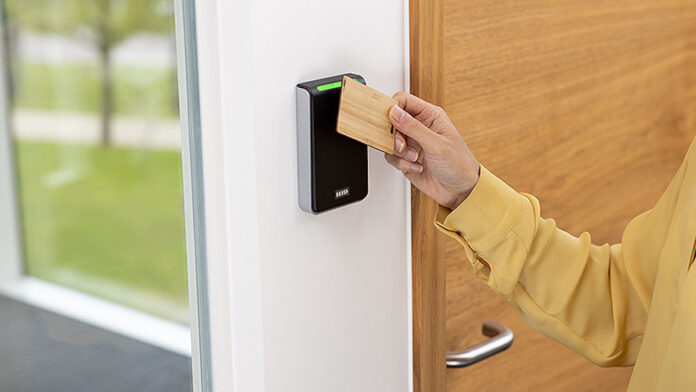HID 2024 State of Security Report Highlights 6 Key Areas Of Development.
HID 2024 State of Security Report – HID has released its State of Security Report, which considers trends in the access control industry relying on input from security installers and end users globally.
Key points of interest include the prediction mobile ID will be ubiquitous in 5 years, multi-factor authentication is gaining ground with 83 per cent of organisations using it – and passwords will die out.
HID also found sustainability is growing as a factor in 74 per cent of decisions, biometrics is taking off, with 39 per cent of respondents saying they use it and 30 per cent planning to use it, ID management is heading into the cloud, and AI has launched, with 35 per cent of respondents saying they were planning on implementing an AI application in the next few years.
HID 2024 State of Security Report
1. Mobile identity is expected to be ubiquitous in the next 5 years
Given the widespread use of mobile devices, momentum continues to build around their use in support of identity. Within the next 5 years, surveyed end users state that nearly 80 per cent of organizations will deploy mobile IDs. Industry partners are even more optimistic in their outlook, stating that 94 per cent of their customers will have deployed mobile IDs.
2. Multi-factor authentication widespread despite slow implementation of Zero Trust
More than 83 per cent of end user respondents said their organization currently uses multi-factor Authentication (MFA), mainly due to the vulnerabilities of passwords.
For many, this represents the first step on the longer journey toward Zero Trust, an approach to security that calls for organizations to maintain strict access controls and to never trust, always verify anyone – internal or external – by default. Zero Trust has been implemented in 16 per cent of organizations with over 100,000 employees and 14 per cent in those with up to 10,000 employees, according to the survey.
With MFA being widespread, the eventual end of passwords is imminent. The creation of new standards such as Fast Identity Online (FIDO), which uses “standard public key cryptography techniques to provide phishing-resistant authentication,” will pave the path to new and more secure authentication options that will be part of a more robust Zero Trust architecture.
3. Sustainability a growing driver in business decisions
Among HID’s survey respondents, sustainability continues to rank high as a business priority, with both end users and partners rating its importance at a 4 on a 1-to-5 scale. Additionally, 74 per cent of end users indicate the importance of sustainability has grown over the past year, and 80 per cent of partners reported the trend growing in importance among their customers.
There will be a continued emphasis on solutions that minimize energy use, reduce waste, and optimize resource usage. A shift to cloud-based solutions and increased use of mobile devices are 2 clear strategies to reach these sustainability goals.
4. Biometrics continues its impressive momentum
In this year’s survey, 39 per cent of installers and integrators said their customers are using fingerprint or palm print, and 30 per cent said they’re using facial recognition. The momentum continues to build as 8 per cent plan to test or implement some form of biometrics in the next year and 12 per cent plan to do so in the next 3 to 5 years.
5. Identity management points up to the cloud
Nearly half of end users are moving to cloud-based identity management, with 24 per cent already using it and another 24 per cent in the process of implementing such systems. Industry partners say their customers face several hurdles here, including existing reliance on legacy/on-prem equipment (28 per cent), lack of budget (24 per cent), and cloud-based identities simply not being a business priority (21 per cent).
6. The rise of artificial intelligence for analytics use cases
Conversations about AI have come to dominate the business landscape, and many security professionals see AI’s analytic capabilities as the low-hanging fruit to enhance identity management. Rather than looking to AI to inform the entirety of the security system, it’s possible to leverage data analytics as a way to operationalize AI in support of immediate outcomes. In this scenario, 35 per cent of end users reported they will be testing or implementing some AI capability in the next 3-5 years, with 15 per cent already using AI-enabled biometrics.
You can find HID’s full report here or read more SEN news here.
“HID 2024 State of Security Report Highlights 6 Key Areas Of Development.”










